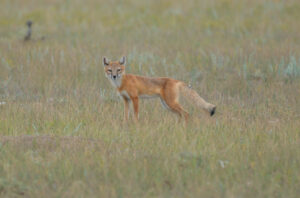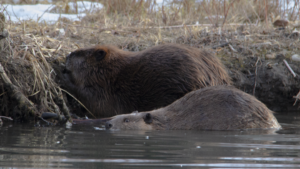by Chelsea Blyth
Cohabitating with Alberta Wildlife
As communities continue to grow in Alberta, there is constant concern about how to manage wildlife in urban areas1. Wildlife encounters are becoming more common, with issues such as conflicts with bobcats, coyotes, and other animals on the rise. While it can be exciting to see wildlife in our backyards, it’s important to remember that these animals are wild and can be dangerous.
Concerns about Urban Wildlife
One of the primary concerns is the safety of humans and pets. Wild animals are unpredictable and can pose a risk if they feel threatened. Another concern is the potential for property damage. Wildlife can cause damage to homes, gardens, and landscaping.
Finally, there is concern about the impact of urbanization on wildlife populations. As cities and suburbs expand, wildlife habitats are destroyed, and populations can become isolated. This can lead to inbreeding, reduced genetic diversity, and ultimately, the decline of wildlife populations2. Our beautiful Woodland Caribou are a prime example of a species that is currently at risk due to these varying issues.
Management Strategies for Urban Wildlife
Managing wildlife in highly populated areas is a complex issue, but there are a number of strategies that can be employed to reduce conflicts between humans and wildlife. One of the most important strategies is education3. Residents of these areas need to be educated about wildlife encounters and how to best handle them, or if possible, avoid them altogether. Some examples include properly disposing of garbage and compost, keeping cats indoors, and never feeding wild animals.
In addition, habitat management plays a crucial role in preserving and protecting wildlife habitats, to ensure that populations can thrive. This includes creating green spaces, preserving natural areas, and planting native vegetation. There are also a number of non-lethal methods that can be used to deter wildlife from urban areas. Lastly, when conflicts do arise, it’s important to have trained wildlife professionals available to provide assistance.
Conclusion
Education, habitat management, and non-lethal methods of deterrence are all important tools in managing urban wildlife. By working together, we can ensure that wildlife populations can thrive while also keeping humans and pets safe.
Footnotes
- City of Calgary. (2022) Bobcats in the Community. Retrieved from
https://www.calgary.ca/council/ward-2/articles/bobcats-in-the-community.html2. - Alberta Fish and Wildlife. (2020) Wild Species Status Search. Retrieved from
https://www.alberta.ca/lookup/wild-species-status-search.aspx - Alberta. (2023) Human wildlife conflict. Retrieved from
https://www.alberta.ca/human-wildlife-conflict.aspx






